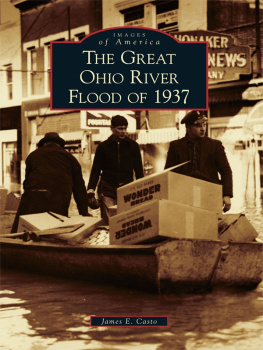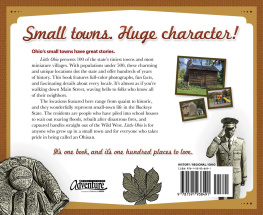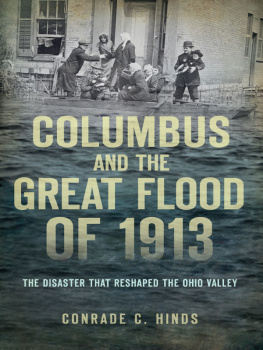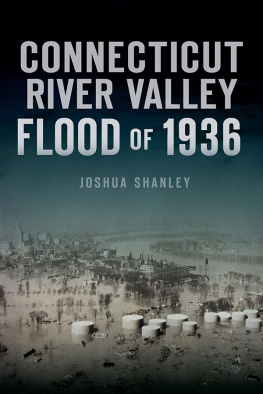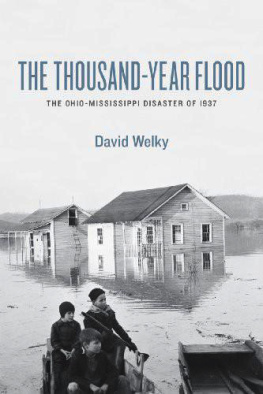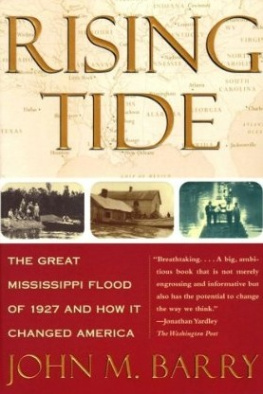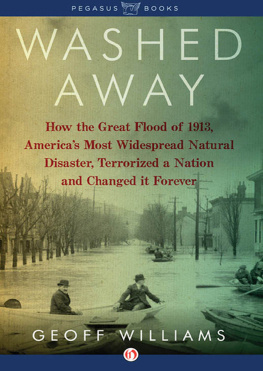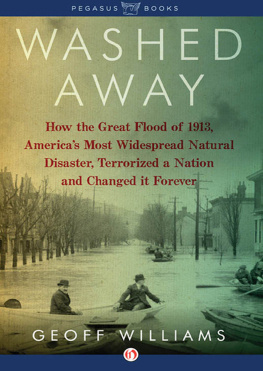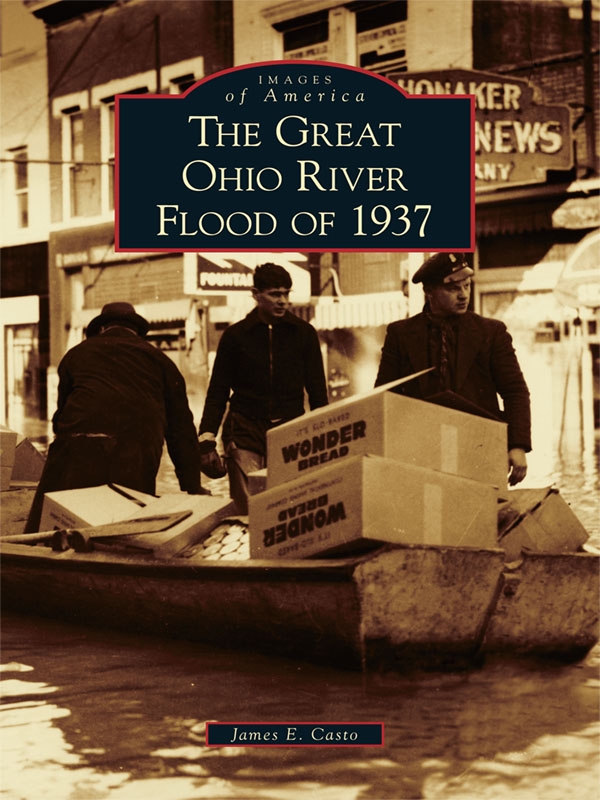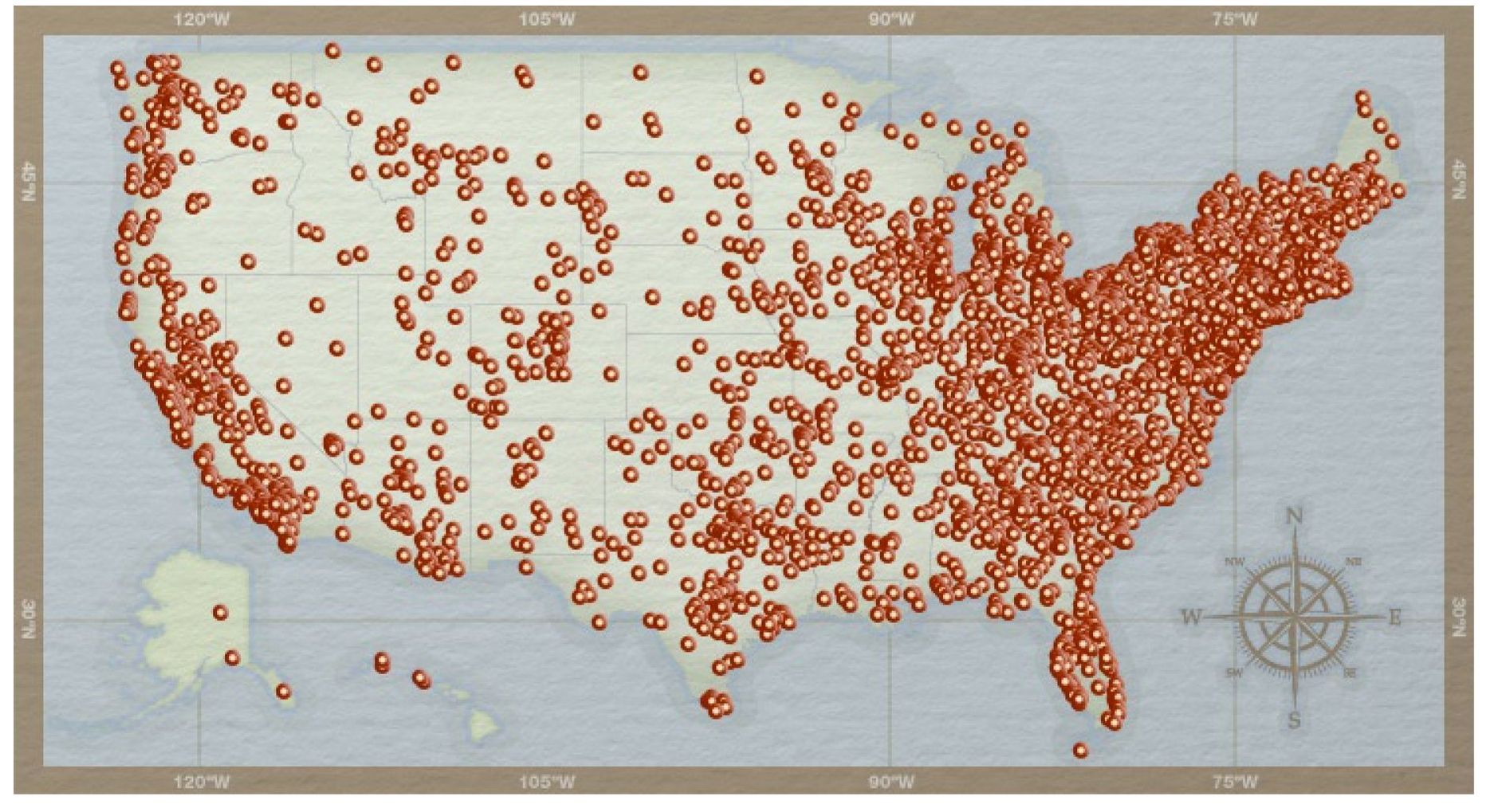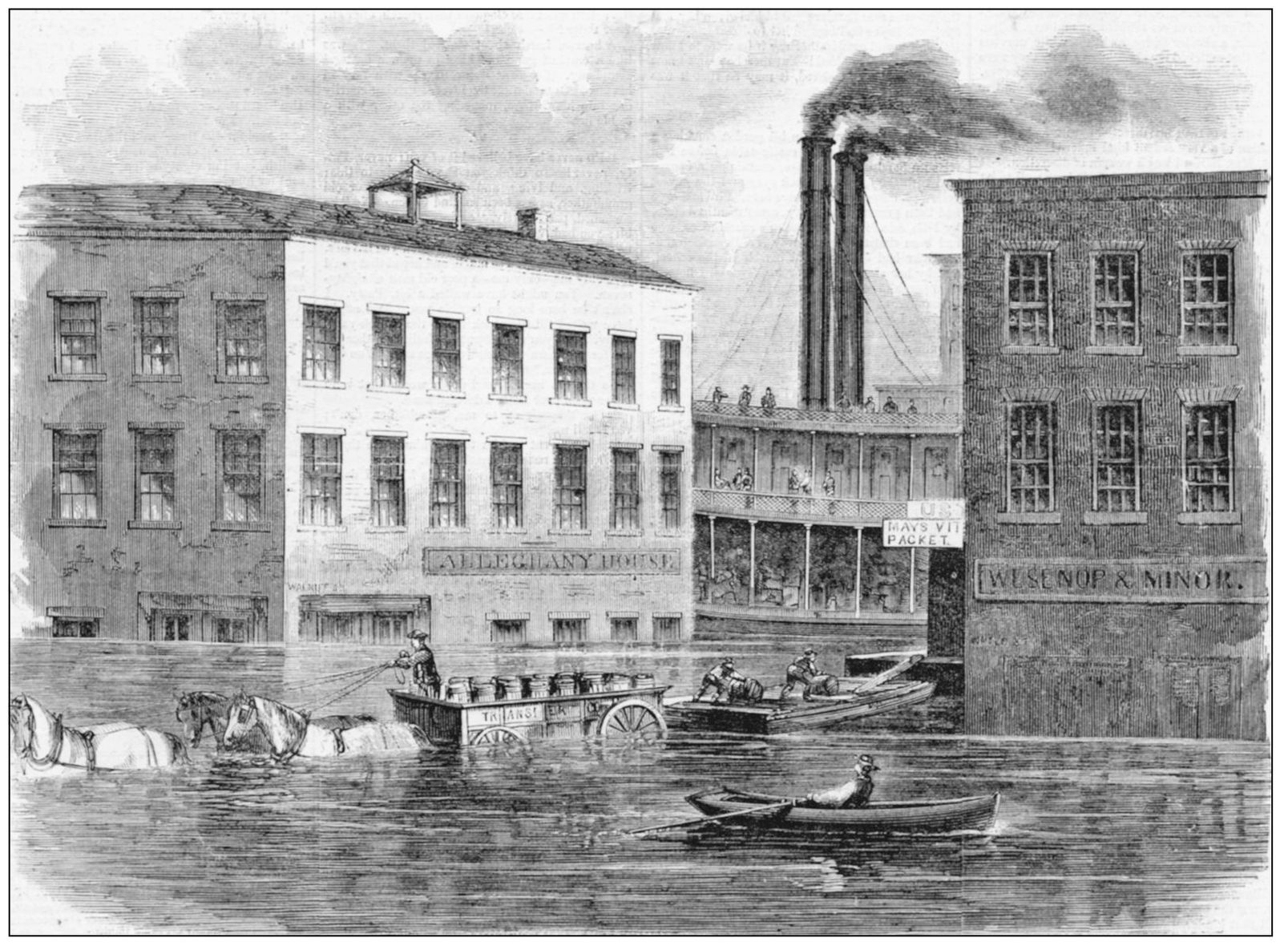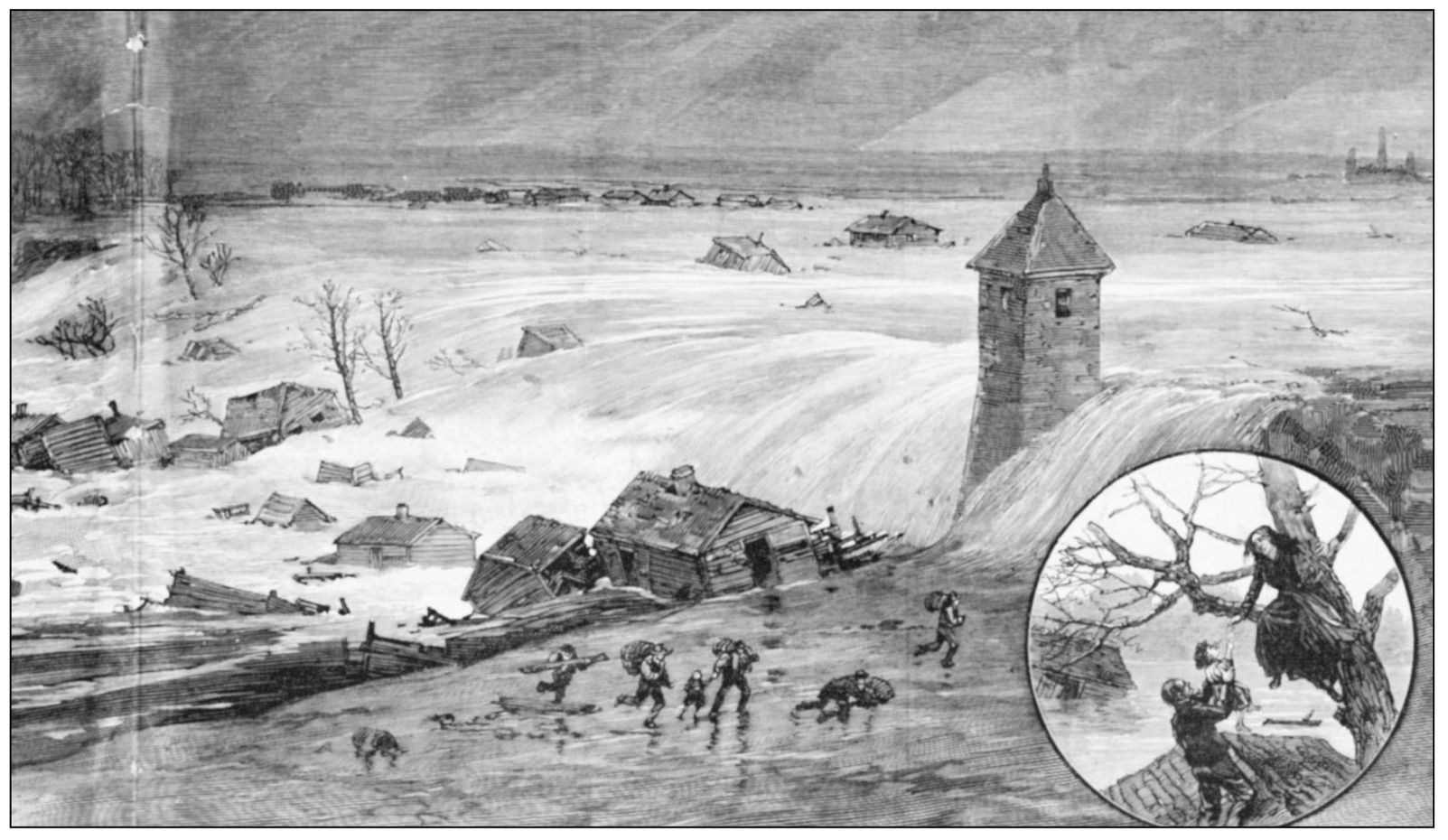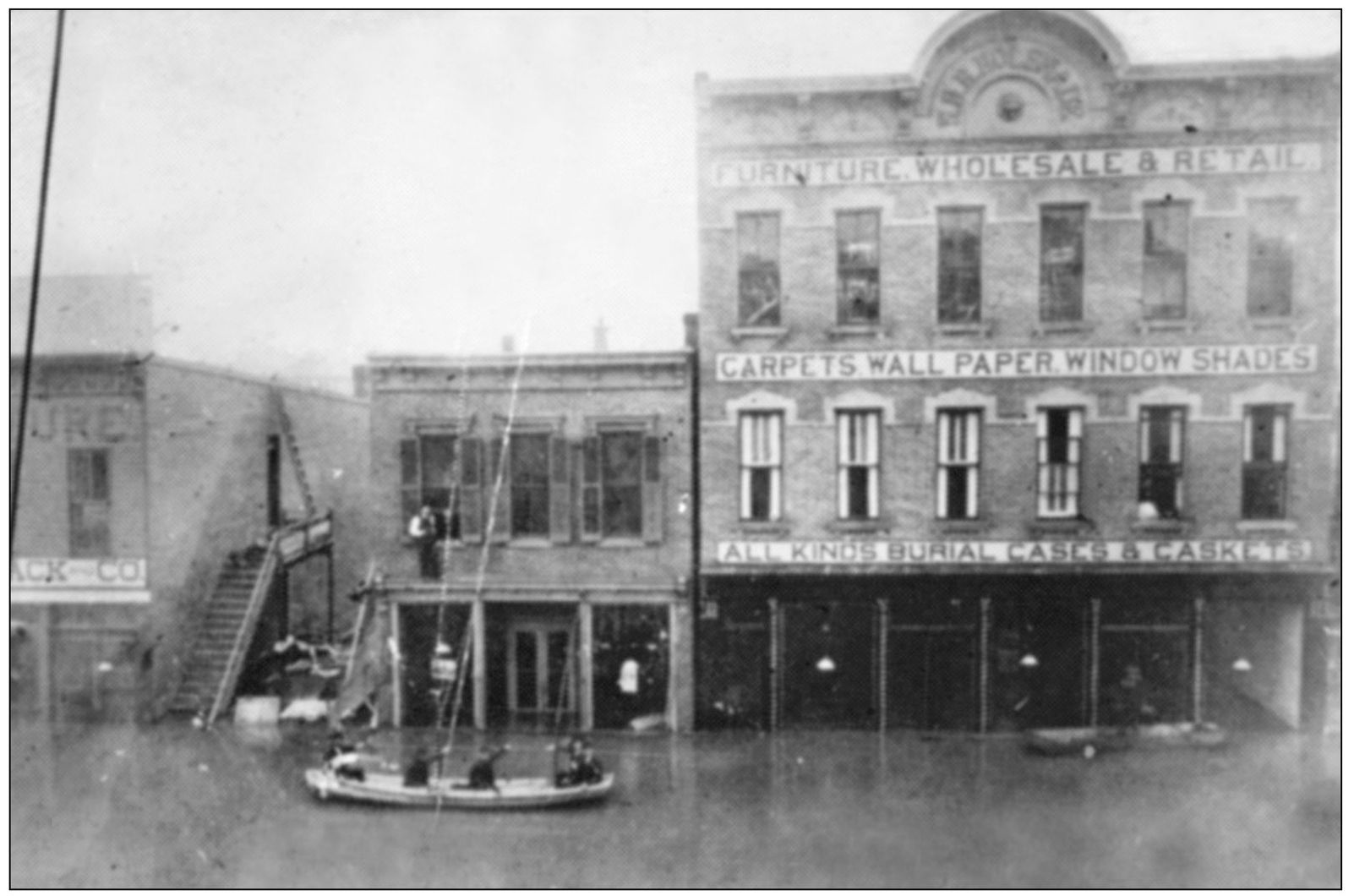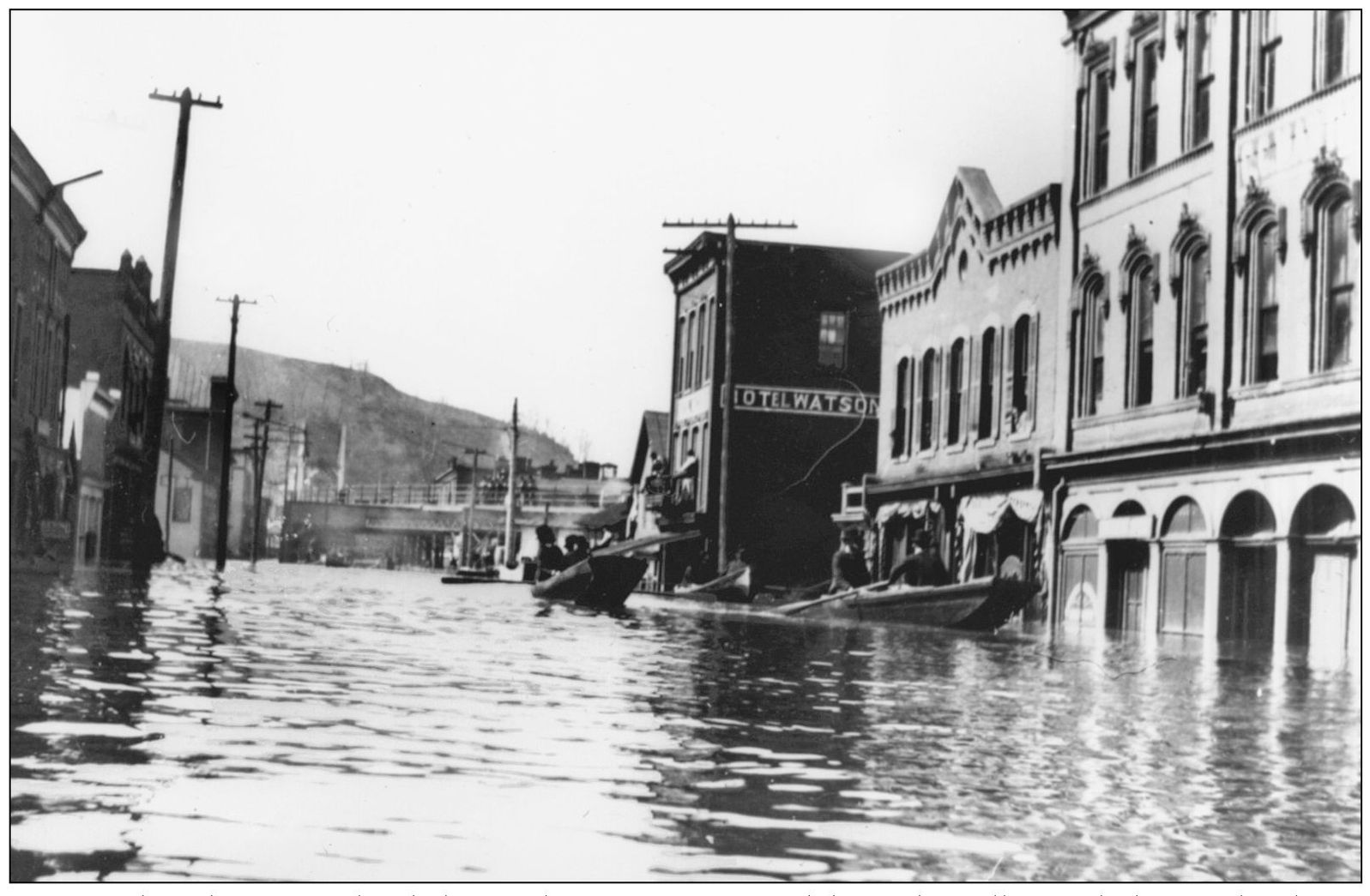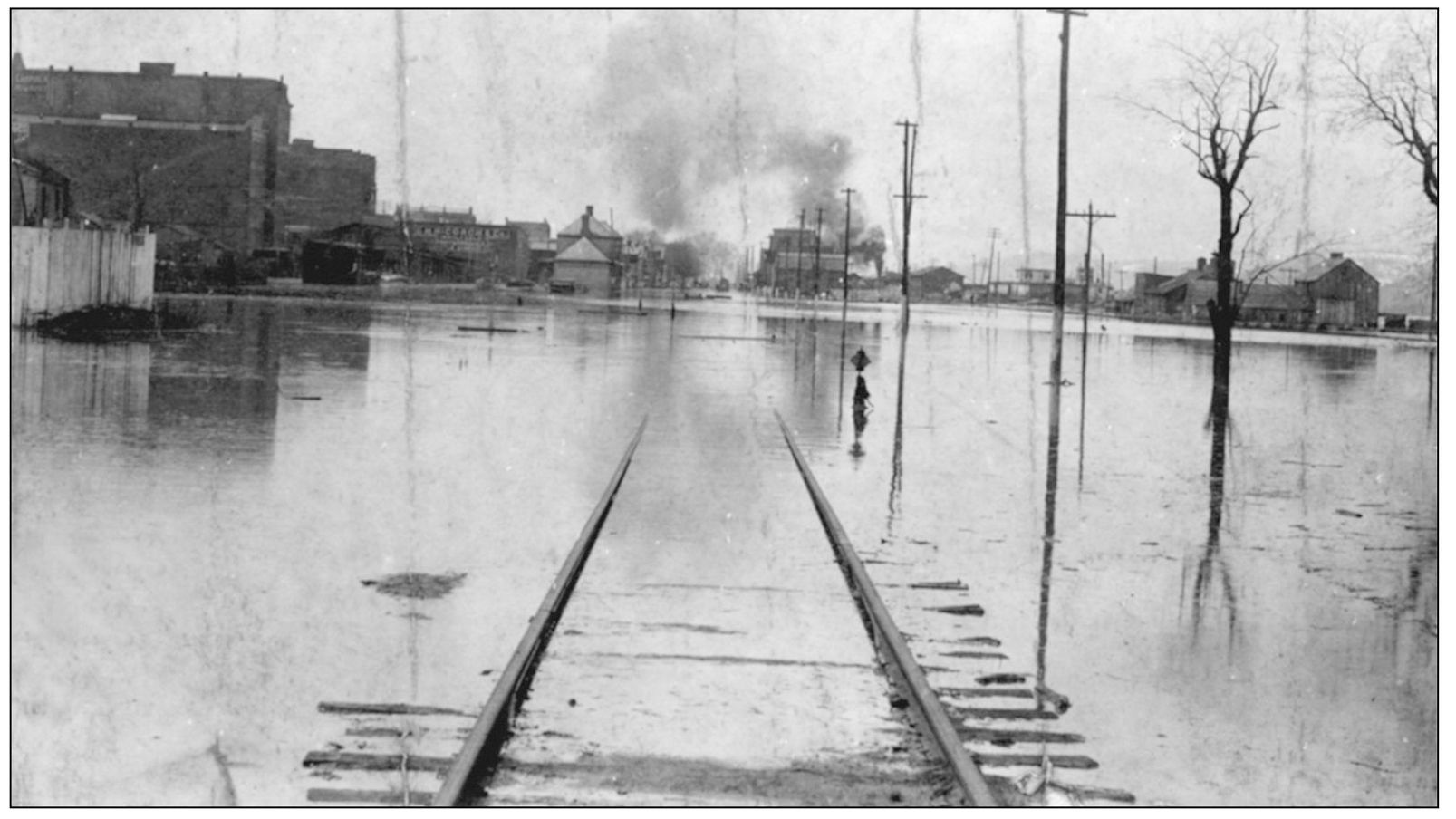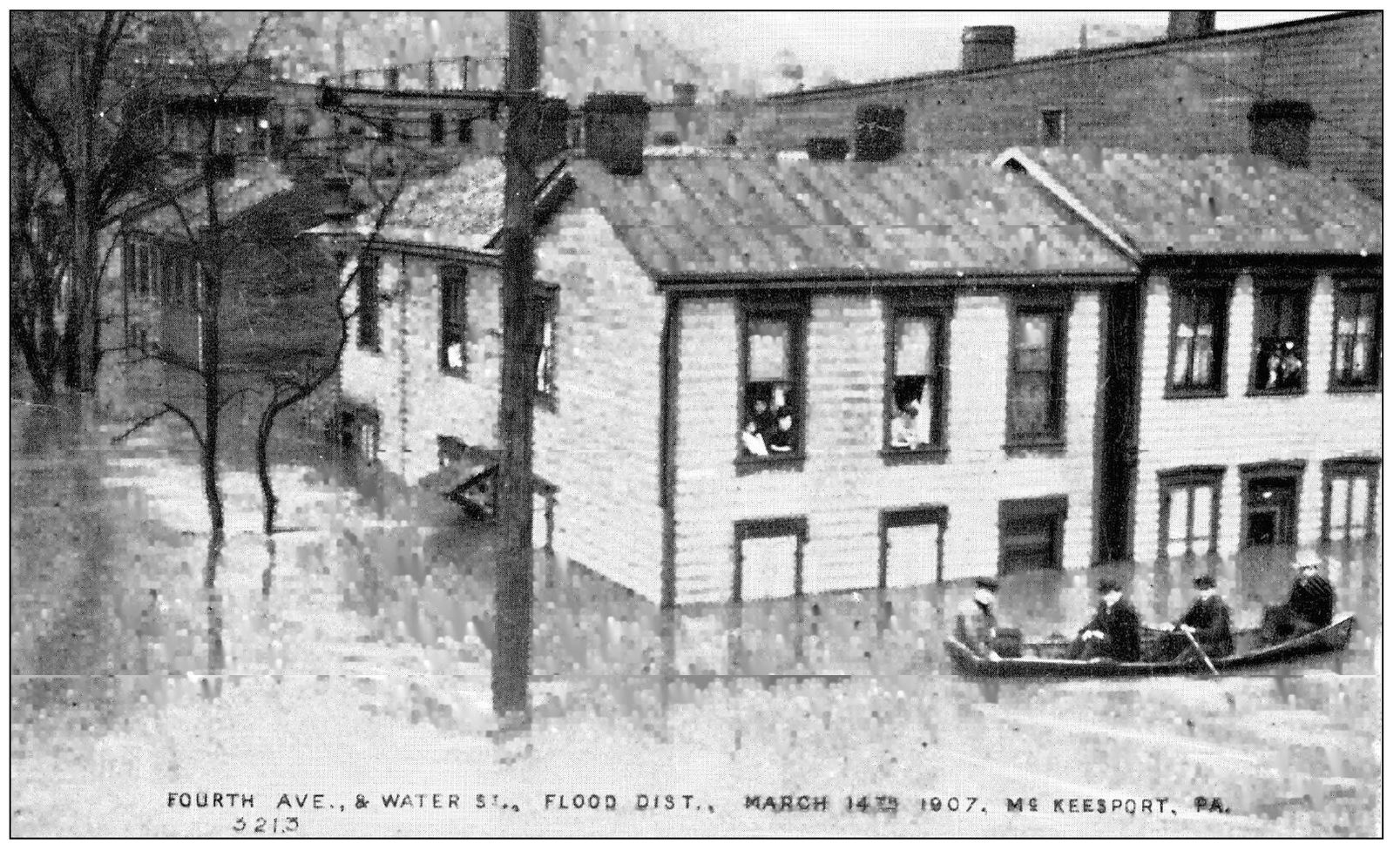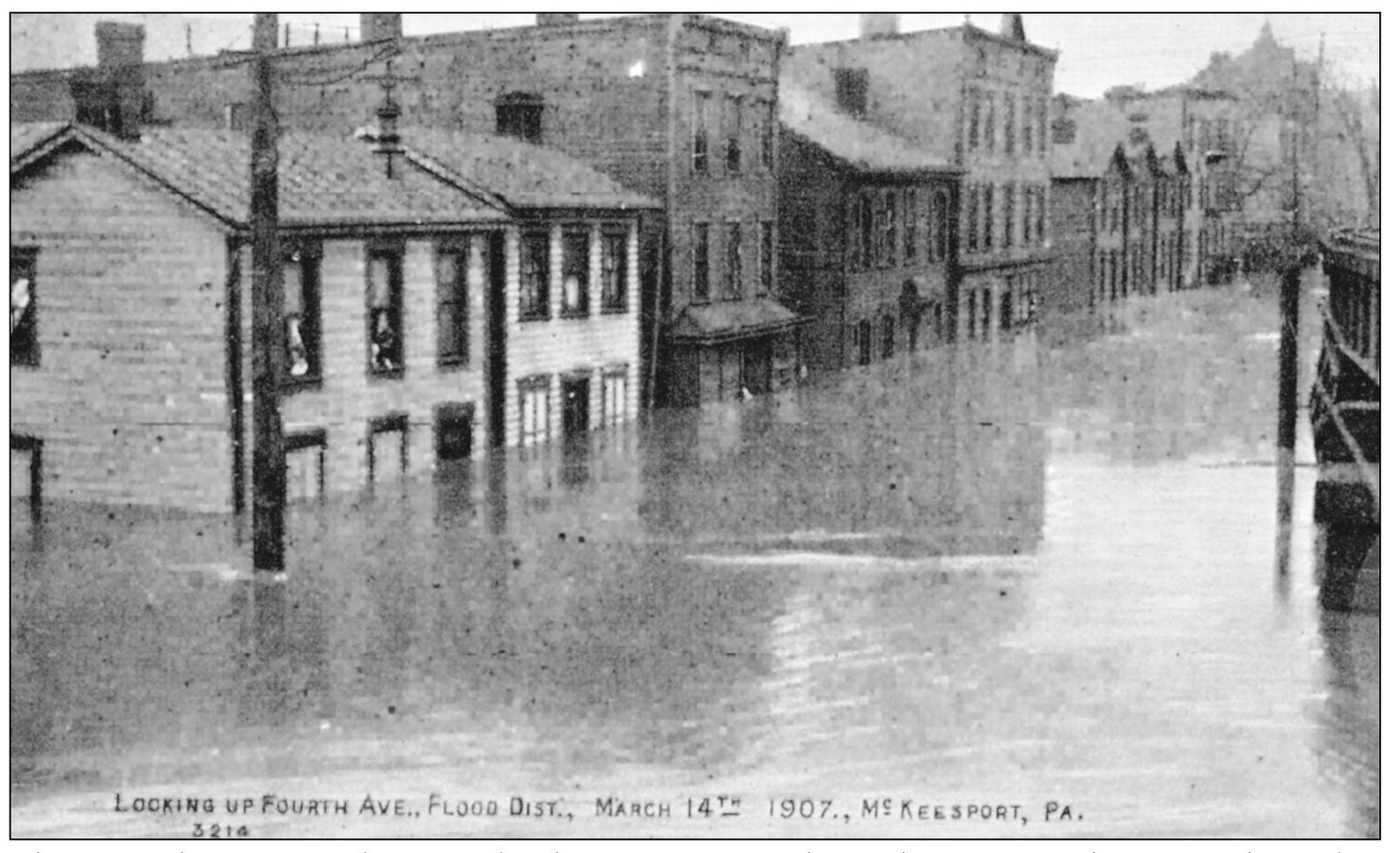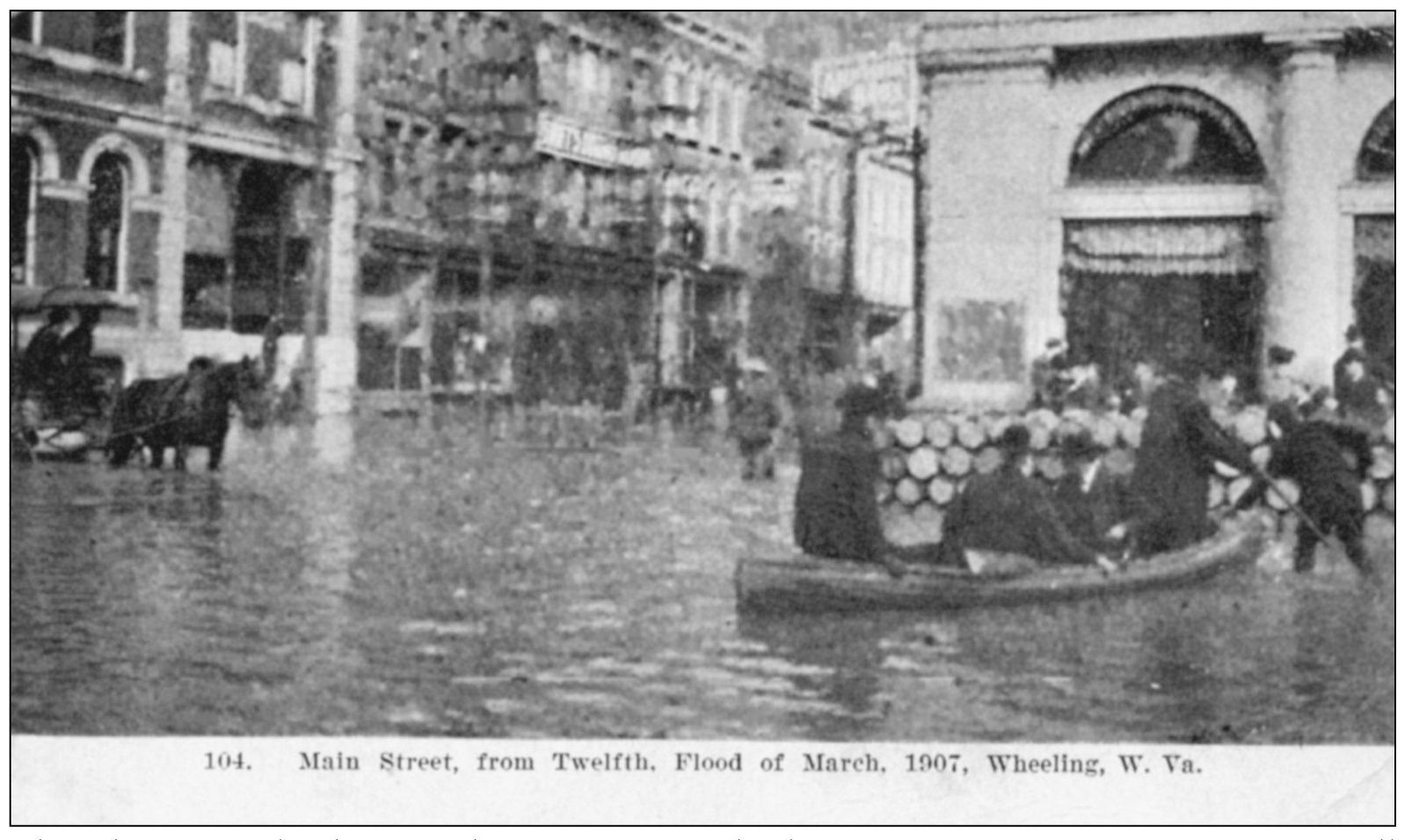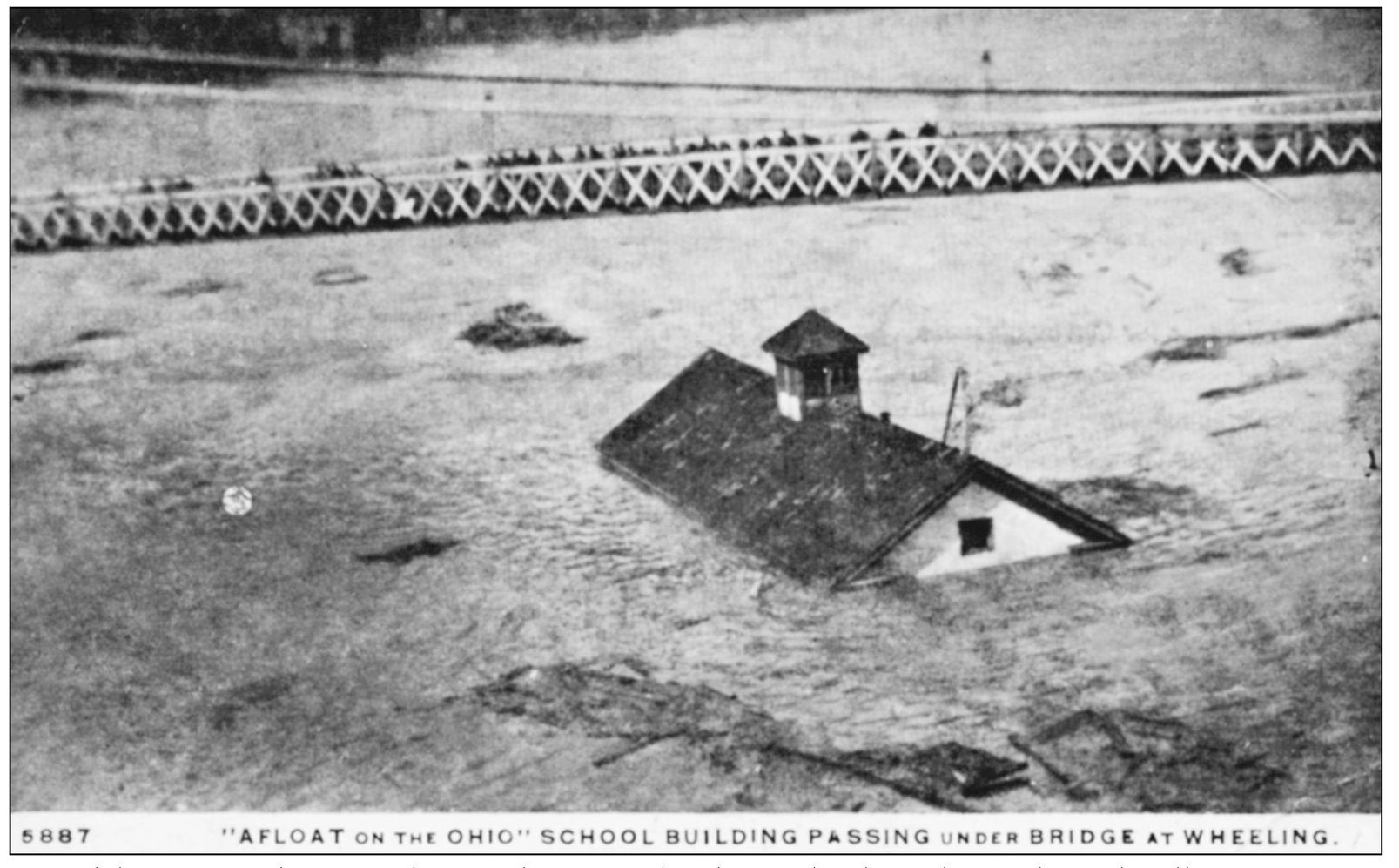One
ANGRY WATERS
The February 22, 1862, issue of Harpers Weekly published this sketch of a packet boat from Maysville, Kentucky, landing at the wharf at Cincinnati, Ohio, during a flood a few weeks earlier, on January 25. In submitting his sketch, artist George M. Finch wrote that such floods only occur about once in 15 years. It seems Finch was better at sketching than he was at river forecasting. In fact, major floods often swept down the Ohio in back-to-back years.
This detail is from a larger sketch published in Harpers Weekly of March 3, 1883, titled The Breaking of the Embankment at Louisville, Kentucky. Houses caught by the rushing floodwaters float down the river while hapless residents flee for their lives. Note the drawing inset at lower right showing a family seeking refuge in a tree.
On February 12, 1884, people in Huntington, West Virginia, had to helplessly watch as the Ohio River flooded their young town, then an unlucky 13 years old. The large three-story building in this photograph was home to W. H. H. Holswades furniture store, located on the south side of Third Avenue between Ninth and Tenth Streets. As was the custom at the time, Holswade sold not only rocking chairs and kitchen tables, but also caskets and other funeral goods.
In 1889, the Ohio again flooded a number of towns up and down the valley, including Parkersburg, West Virginia, shown here in a vintage photograph taken at Second and Ann Streets. In the background can be seen Fort Boreman hill and a railroad trestle. The only business that can be identified is the Hotel Watson. When the Ohio flooded in 1913, several buildings in this section burned down to the water line.
A note on the back of this photograph indicates it was taken in Huntington, West Virginia, on April 23, 1901, but offers no clue as to the location of this stretch of flooded railroad track. Magnification identifies one of the buildings at left as the refrigerated storage warehouse built and operated by J. M. McCoach and Company, which means this is the main line of the Chesapeake and Ohio Railway, looking east from a point just past the citys downtown.
This postcard from McKeesport, Pennsylvania, shows the flooded intersection of Fourth Avenue and Water Street on March 14, 1907. McKeesport is located about 12 miles up the Monongahela River from Pittsburgh, Pennsylvania, where the Monongahela and Allegheny Rivers join to form the Ohio River. Thus, strictly speaking, this is not an Ohio River flood scene. Nonetheless, it is a good example of how swollen tributaries add to the Ohios floodwaters.
This second view from the 1907 flood in McKeesport shows the same two houses as the earlier card but looks along Fourth Avenue, showing some of the streets other flooded houses and buildings. Settled in 1795 and named in honor of John McKee, its founder, McKeesport in the 1930s was home to more than 50,000 people. Today its population is less than half that, a decrease attributable to the decline of the regions steel industry.
The Ohio River flood of March 1907, one of Wheeling, West Virginias worst ever, was well documented by enterprising photographers who turned their work into souvenir postcards, such as this one showing the flooded intersection of Main and Twelfth Streets. Within days of the flood, Nicolls Art Store ran a newspaper advertisement for its postcards, boasting, Our Camera Experts were active and caught everything worth seeing.
A widely reprinted postcard from the 1907 flood in Wheeling shows this schoolhouse passing under the citys suspension bridge. The school building was reported to have floated down the river from Warrenton, Ohio, to Sistersville, West Virginia, a distance of more than 100 miles. If you listen, you can almost hear the school bell clanging as the river tosses the little building about and sweeps it downstream.

